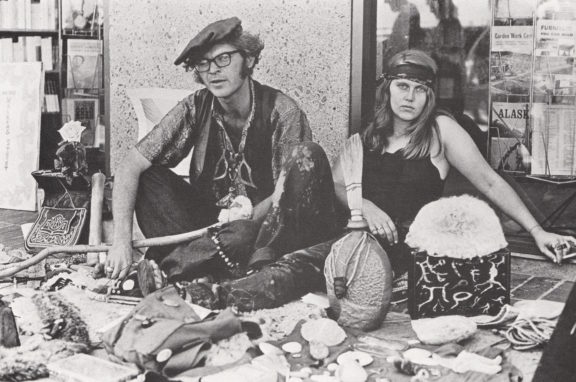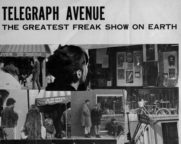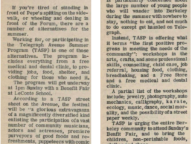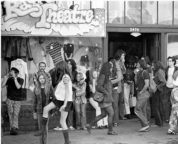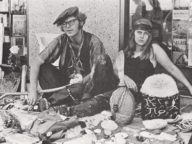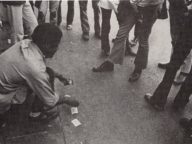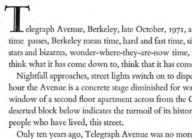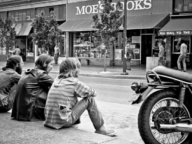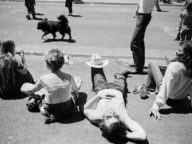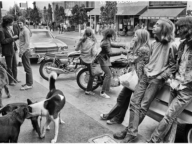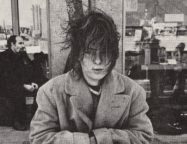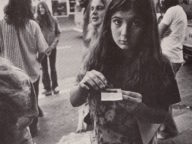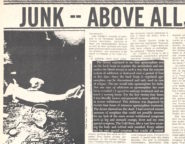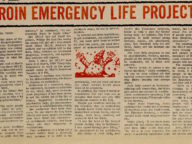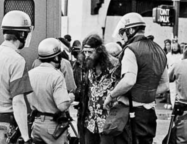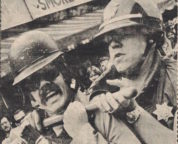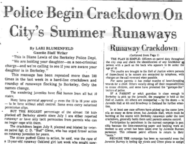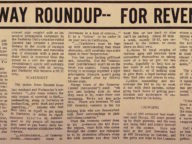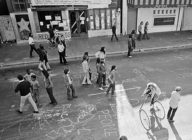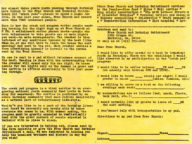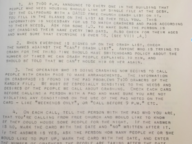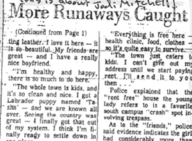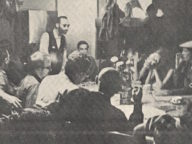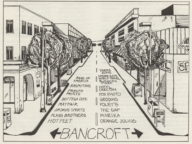In an early photograph in Rag Theater, Nacio Jan Brown presented what has now become a visual hallmark of Telegraph Avenue: street vendors selling their handmade wares.
The arrival of street vendors neatly divides the history of Telegraph Avenue into two eras: pre-1967 and post-1967. Street vendors had not been a feature of the Avenue until 1967, when the area known as “Cody’s Plaza”—the setback area in front of Cody’s Books at 2476 Telegraph, which Pat and Fred Cody kept as a mini-plaza to comply with the city’s master plan at the time—was first given over to a set of vendors.
Pat Cody describes the process that led Cody’s Plaza, and then much of Telegraph Avenue, to be studded with vendors: “In 1967, Hassan and Barbara Erfani asked us if they could set up a flower stand at the southern end of the our sidewalk space. They were the only enterprise there until 1970; free-form rap groups and ad hoc political discussions took the place, and there was Haji’s commune with their rugs and samovar. But then some craft workers came to us in early December and asked if they could set up a display on our sidewalk.
“At this time Berkeley had the typical ‘peddlers’ law’ requiring street sellers to move every five minutes. Our space was private property up to the city sidewalk. One by one they came: leather worker Bill Anderson, carvers of redwood burls, makers of candles. In the cold of December they would camp out all night so that no one would take their spot. The Erfanis volunteered to oversee this free market, making sure no one ‘crashed’ a regular vendor, that only hand-made-by-the-vendor articles were sold, and that everyone had both a city permit and a state sales tax license (otherwise, the tax collector who showed up one morning told me, ‘Cody’s will be responsible for the sales tax on all the goods we estimate are being sold here’).
“Our space was bursting with crafts, requiring that I chalk-mark a path to be kept clear for our customers. More and more young people wanted to make a living from handicrafts, opting out of what they perceived as a soulless industrial machine. They began to occupy other space on the street, often to the irritation of established stores. After many a clash over this issue, some of the vendors came to Fred and asked for his help in getting the peddling ordinance changed. As people who had also started our independent business life in a small way, we felt sympathy for them. And, after months of meetings with city officials, a new ordinance was passed. Ever since then, for nearly twenty years now, Telegraph Avenue has a daily street market that comes to a climax every December. Merchants have learned to live with it and some of them will even concede that it is an attraction that brings thousands of visitors to the area.”
